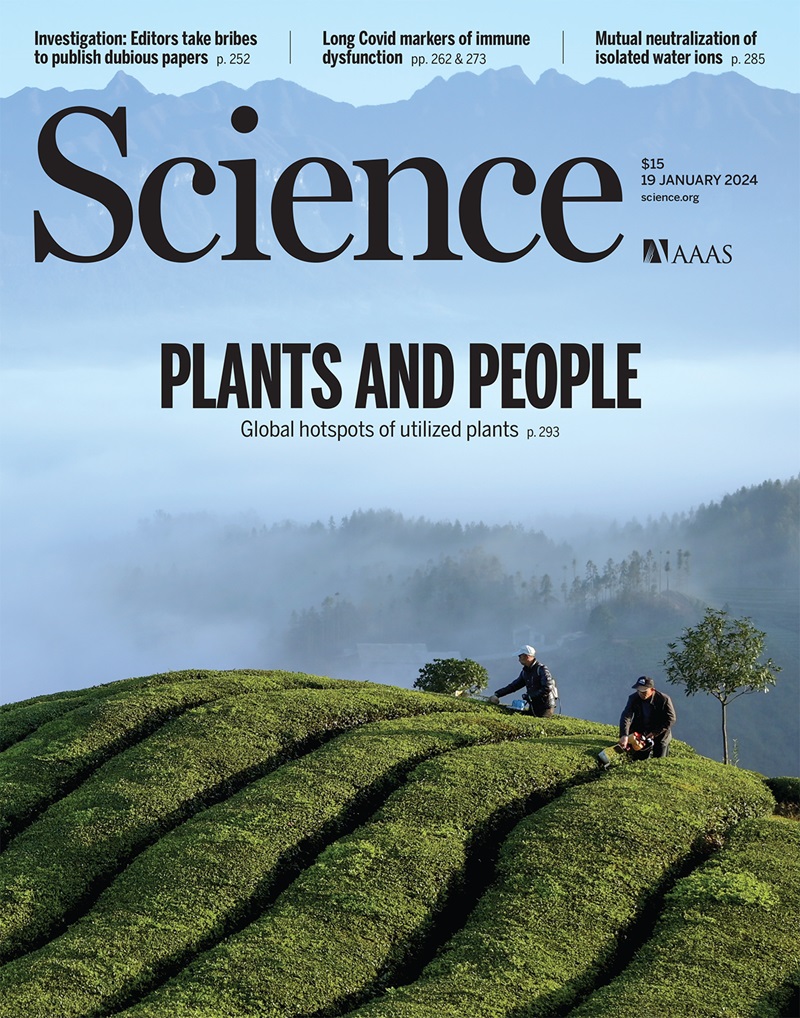梯度折射率使鱿鱼的结构颜色和启发多光谱材料
IF 44.7
1区 综合性期刊
Q1 MULTIDISCIPLINARY SCIENCES
引用次数: 0
摘要
利用具有不同折射率分布的材料对光的操纵在自然系统和现代技术中广泛存在。然而,了解动物如何利用折射率差异进行动态颜色变化,然后将这种见解转化为可调光学设备仍然具有挑战性。我们通过实验和计算证明,含有正弦波折射率分布的Bragg反射体的虹彩细胞(虹膜团)使鱿鱼背地幔组织能够在接近透明和鲜艳的彩色状态之间可逆地过渡。然后,我们从这些发现中获得灵感,设计和开发具有可调谐可见光和红外功能的彩虹团启发的多光谱复合材料。我们的研究为鱿鱼的动态结构着色机制提供了见解,并为伪装、热管理、显示和传感应用提供了技术。本文章由计算机程序翻译,如有差异,请以英文原文为准。
Gradient refractive indices enable squid structural color and inspire multispectral materials
The manipulation of light by means of materials with varying refractive index distributions is widespread among natural systems and modern technologies. However, understanding how animals leverage refractive index differences for dynamic color changes and then translating such insight into tunable optical devices remains challenging. We experimentally and computationally demonstrated that iridescent cells (iridophores) containing Bragg reflectors with sinusoidal-wave (rugate) refractive index profiles enable squid dorsal mantle tissues to reversibly transition between nearly transparent and vibrantly colored states. We then drew inspiration from these findings for the design and development of iridophore-inspired multispectral composite materials with tunable visible and infrared functionalities. Our study provides insight into squid dynamic structural coloration mechanisms and furnishes a technology for camouflage, heat management, display, and sensing applications.
求助全文
通过发布文献求助,成功后即可免费获取论文全文。
去求助
来源期刊

Science
综合性期刊-综合性期刊
CiteScore
61.10
自引率
0.90%
发文量
0
审稿时长
2.1 months
期刊介绍:
Science is a leading outlet for scientific news, commentary, and cutting-edge research. Through its print and online incarnations, Science reaches an estimated worldwide readership of more than one million. Science’s authorship is global too, and its articles consistently rank among the world's most cited research.
Science serves as a forum for discussion of important issues related to the advancement of science by publishing material on which a consensus has been reached as well as including the presentation of minority or conflicting points of view. Accordingly, all articles published in Science—including editorials, news and comment, and book reviews—are signed and reflect the individual views of the authors and not official points of view adopted by AAAS or the institutions with which the authors are affiliated.
Science seeks to publish those papers that are most influential in their fields or across fields and that will significantly advance scientific understanding. Selected papers should present novel and broadly important data, syntheses, or concepts. They should merit recognition by the wider scientific community and general public provided by publication in Science, beyond that provided by specialty journals. Science welcomes submissions from all fields of science and from any source. The editors are committed to the prompt evaluation and publication of submitted papers while upholding high standards that support reproducibility of published research. Science is published weekly; selected papers are published online ahead of print.
 求助内容:
求助内容: 应助结果提醒方式:
应助结果提醒方式:


